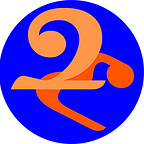A deep dive into vision
When we go to the eye clinic, we expect to walk out with our best possible vision. This is particularly true for those of us who need an active intervention — glasses, contact lenses, cataract surgery, retinal detachment repair, etc — to be able to see the best we can.
But what does it actually mean to see our best?
Does it mean being able to read the 20/20 line on the eye chart? Or does it mean being able to navigate our surroundings well enough to get home safely (whether that be on foot, bike, or by car)?
Does it mean appreciating every single detail on a tree that’s 20 feet away? Or does it mean noticing the slightest shift in a loved one’s facial expression?
One way to frame one’s thinking about good/better/best vision is to revisit the dreaded eye doctor question: “Which is better, 1 or 2?”
For context, this excruciating question, often delivered multiple times in a row, is an integral part of “manifest refraction,” aka the process of measuring one’s glasses/contact lens prescription. And when asked this question, a lot of my patients (and friends and colleagues and family members) express anxiety about giving the wrong answer, i.e. saying 1 when they should’ve said 2 or vice versa.
The “1 or 2” question surfaces, amongst other things, a completely understandable fear of ending up with an inaccurate prescription and consequently not being able to see our best even after spending $700 on a pair of glasses or a year’s worth of contacts. This fear is part function of human psychology — of wanting to get the “right answer” on a test — and part function of a broken industry — in what reasonable universe should we have to pay through the nose to fill the basic human need to… see?
There is no “wrong or right” answer to the “1 or 2” question, by the way.
When your eye doctor is asking you this, they are really just trying to figure out how you prefer to see the world: Do you like seeing sharpest detail possible, or do you like a bit of blur? Do you want to see colors at their brightest, or do slightly darker tones suit your disposition better?
Consider how some of us like watching movies in different formats. Some prefer the slight imperfections of 35mm film, while others prefer the hyperreal detail of ultra HD. One format isn’t necessarily better than the other, but they’re definitely different viewing experiences.
Another example is folks’ predilection for (or hatred of) photo filters. Some prefer piling on the filters and stickers, others prefer minimal to no editing, and still others prefer saturated black and white tints.
Your visual preferences are, in other words, highly personal and very subjective. At the end of the day, your “1” is not the same as another person’s “1.”
And so, defining your “best” vision is much more complex than reporting what you can see on an eye chart.
The fact that you may or may not be able to see 20/20 gives very little information about how happy you are with your vision, how satisfying your visual experiences are, or even how effectively you navigate your surroundings.
It’s certainly important to be able to see 20/20 for certain tasks like operating a car or other heavy machinery, but being able to see a perfect 20/20 is not a requirement for a fulfilling life. Your ability to drive and do other visually demanding tasks definitely affects your quality of life, but the richness and awesomeness of your life can’t really be distilled down to a simple 20/20, 20/30, or even 20/100.
Seeing is as reflexive and spontaneous as breathing. After all, when you’re awake, you’re always seeing, even if you’re in a dark room. Whether or not you *notice* and/or respond to the things in your visual field is of course another story.
Another interesting point to consider is that you can’t really “unsee” the scenes you move through and inhabit; yes you can choose to close your eyes when you don’t want to see something, but even so, certain already-seen images just stick around in your mind, forever seen (at least until your memory fades.)
For those fortunate enough to see and see well, protecting our vision is tantamount to protecting our ability to navigate, interact with, and in some cases extract meaning from the world.
And when it comes down to it, without healthy eyes, we lose the ability to see our personal “best.” Whether this happens suddenly or over time, certain negative psychosocial implications (e.g. decreased productivity, social isolation) may come to bear.
Taking care of our eyes via preventative measures — frequent screen breaks, UV protection, digital eye health checks, and in-person visits when necessary — is vital to overall mental health and productivity.
Fortunately, given the rapid pace of innovation within and outside of eyecare, taking good care of one’s eyes will be as simple as accessing the Internet. And with at-home eyecare in particular, we can give ourselves the best shot at maintaining our best vision and therefore give ourselves the best shot at living our best lives.
-Quinn
